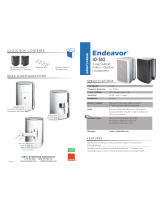QSC AD-S28TW (D) is a high-performance subwoofer designed to deliver exceptional low-frequency reinforcement in a variety of applications. With its dual 8-inch woofers in a ported bandpass enclosure, it offers deep, impactful bass response, making it ideal for use in live sound, DJ setups, and home audio systems.
QSC AD-S28TW (D) is a high-performance subwoofer designed to deliver exceptional low-frequency reinforcement in a variety of applications. With its dual 8-inch woofers in a ported bandpass enclosure, it offers deep, impactful bass response, making it ideal for use in live sound, DJ setups, and home audio systems.












-
 1
1
-
 2
2
-
 3
3
-
 4
4
-
 5
5
-
 6
6
-
 7
7
-
 8
8
-
 9
9
-
 10
10
-
 11
11
-
 12
12
QSC AD-S28TW (D) User manual
- Type
- User manual
- This manual is also suitable for
QSC AD-S28TW (D) is a high-performance subwoofer designed to deliver exceptional low-frequency reinforcement in a variety of applications. With its dual 8-inch woofers in a ported bandpass enclosure, it offers deep, impactful bass response, making it ideal for use in live sound, DJ setups, and home audio systems.
Ask a question and I''ll find the answer in the document
Finding information in a document is now easier with AI
Related papers
Other documents
-
Voyager GR104 User manual
-
Artsound AS40T W Datasheet
-
321 Studios 29AV User manual
-
Tannoy AMS 8DC-WH Quick start guide
-
 Endeavor IO510B User manual
Endeavor IO510B User manual
-
OEM Systems IO510B User manual
-
JL Audio M121B6 Owner's manual
-
Biamp R.5 Owner's manual
-
Electro-Voice EVC-1181S Installation guide
-
Bosch EVID 3.2T User manual












